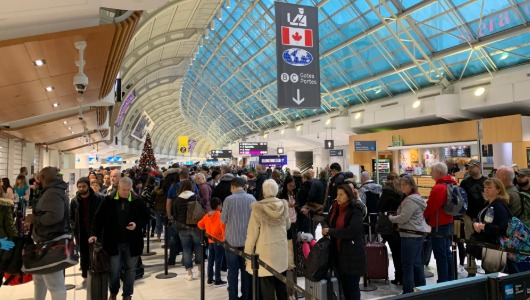Changes to Out-of-Country Medical Coverage Now in Effect

CAA South Central Ontario is reminding travel agents and travellers that changes to out-of-country medical coverage in Ontario are now in effect, prompting the need to review travel insurance coverage.
“We are working to educate travellers to make sure they know what they are buying. We are an organization founded to help keep our members safe, and coverage while travelling abroad is a big part of that,” said Elliott Silverstein, director, government relations, CAA Insurance. “Travel insurance protects from unexpected and costly emergencies and it’s important to evaluate available coverage, based on personal needs, to determine how to best safeguard you and your family. This is even more important now that there is no coverage through OHIP.”
Some of the key things to consider when it comes to buying travel insurance are how many trips you are taking a year; if you want comprehensive coverage or medical-only insurance; and whether or not the insurance provider offers additional assistance such as interpreters, hospital recommendations and other co-ordination services.
Additional tips to consider when buying travel insurance:
Ask questions. Speak to a knowledgeable travel insurance advisor that understands your needs.
Be honest. It is important that you answer any questionnaire accurately to disclose any pre-existing conditions, and ensure you have the proper coverage suited specifically for you, so you can travel with peace of mind.
Build travel insurance into your travel plans. Purchasing travel insurance must be done in your home province. As you begin to consider your next destination, add travel insurance to your “to do” list.
Don’t base your decision on price alone. Look at what coverage is most appropriate for your circumstances and consider all different types of plans and levels of protection.
Questions to ask:
What are the eligibility and exclusions?
What is the pre-existing and stability clause?
What are the benefit limits?
How many days am I covered?
Is there a deductible?
Do they offer upfront payment if a claim occurs?
It’s important to remember that the intent of travel medical insurance is to treat emergency conditions, and return you to your home province for ongoing treatment once your medical condition is stabilized.
Emergency travel medical insurance may require completion of a medical health questionnaire depending on age. Medical questionnaires determine premium, not coverage.
In related news, the Canadian Snowbird Association (CSA), a non-profit organization dedicated to defending the rights and privileges of Canadian travellers, has filed a legal challenge against the Ontario Government’s cuts to out-of-country emergency insurance coverage.
“We are filing this legal challenge on behalf of our members, and all Ontario travellers, in order to protect their right to out-of-country emergency medical care which is enshrined in the Canada Health Act (CHA),” said Karen Huestis, president of the Canadian Snowbird Association. “These cuts are an egregious violation of the portability requirement of the CHA and must be addressed head-on.”
Portability is one of the five pillars set out in the Canada Health Act that govern the Canadian health care insurance system. Under the CHA, residents who are temporarily absent from their home province or territory or from Canada, must continue to be covered for insured health services during their absence. If insured persons are temporarily absent in another province or territory, the portability criterion requires that insured services be paid at the host province’s rate. If insured persons are temporarily out of the country, insured services are to be paid at the home province’s rate.
The Canadian Snowbird Association represents over 50,000 Ontario residents and maintains a total membership of over 115,000 travellers across Canada.


